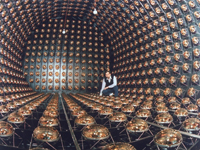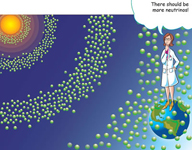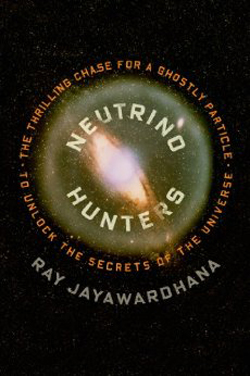    |
||
 |
The Neutrino Hunters: |
Purchase Tickets Season Tickets for this event are available at 503-819-8365 or online here! |
The next decade of neutrino hunting will redefine how we think about physics, cosmology, and our lives on Earth. |
||
|
For more than eighty years, brilliant and eccentric scientists around the world have been searching for the incredibly small bits of matter we call neutrinos. Trillions of these ghostly particles pass through our bodies every second, but they are so pathologically shy that neutrino hunters have to use Olympic-size pools deep underground and a gigantic cube of Antarctic ice to catch just a handful. Neutrinos may hold the secrets to the nature of antimatter and what the universe was like just seconds after the big bang, but they are extremely elusive and difficult to pin down—much like the adventurous scientists who doggedly pursue them. Ray Jayawardhana takes us on a thrilling journey into the shadowy world of neutrinos and the colorful lives of those who chase them. Demystifying particle science along the way, Jayawardhana tells a detective story with cosmic implications—interweaving the tales of the irascible Casanova, Wolfgang Pauli; the troubled genius Ettore Majorana, who disappeared without a trace; and Bruno Pontecorvo, whose defection to the Soviet Union caused a Cold War ruckus. Ultimately, Jayawardhana reveals just how significant these fast-moving particles are to the world we live in, and why the next decade of neutrino hunting will redefine how we think about physics, cosmology, and our lives on Earth.
What is a Neutrino? Neutrinos are neutral particles that rarely interact with matter. Scientists know of three types of neutrinos: electron-neutrinos, muon-neutrinos and tau-neutrinos. Wolfgang Pauli first proposed the existence of neutrinos in 1930. He believed that they were necessary to explain some problems that scientists had noticed with beta decay. During beta decay, an atom's nucleus sheds excess energy by converting a neutron into a proton and an electron and, as scientists now know, an antineutrino. Scientists noticed that when atoms of a particular isotope underwent beta decay, they always lost the same amount of energy, but the electrons were ejected with a range of energies. It appeared as if energy was being destroyed in the reaction, violating a concept known as the conservation of energy. They also noticed that the ejected electron and the recoiling nucleus didn't always move apart on a straight line, but sometimes did so at an angle. This violated another concept known as the conservation of momentum. Believing that the two conservation laws were valid, Pauli stated than an undetected particle must be produced during beta decay, one that would carry away the missing energy and momentum. Neutrinos were detected experimentally by Clyde Cowan and Fred Reines at the Savannah River reactor in South Carolina in 1956. The other two types of neutrinos, the muon-neutrino and the tau-neutrino, are associated with particles known as muons and taus. Muons and taus are essentially heavier versions of electrons. The muon-neutrino was discovered by Leon Lederman, Melvin Schwartz and Jack Steinberger at Brookhaven National Laboratory in 1962. The discovery of the tau-neutrino was announced by a team of scientists working at Fermi National Laboratory on July 21, 2000.
|
|

